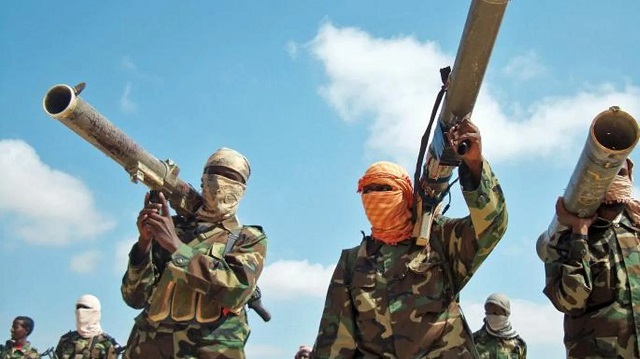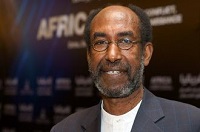
The causes of Somalia’s tragedy are still in place since the murder of President Abdirashid Sharmarke in in 1969
COMMENT | Abdi Ismail Samatar | For at least 14 years now, the militant group Al-Shabaab has terrorised the southern region of Somalia. Its ambition is to impose a tyrannical dictatorship over the entire country through fear and brutality. To achieve its aims, it has sought to oust the Somali government and its foreign military allies.
I have been a student of Somali political economy for over three decades. I predicted the collapse of the Somali state and political order 33 years ago. That analysis foretold the miserable conditions Somalis have endured since. The political and humanitarian catastrophe predates the terrorist group’s rise – thus, Al-Shabaab is a symptom rather than the cause of Somalia’s misfortune.
There are two main forces responsible for the catastrophe that is Somalia. The dominant faction of the Somali political class is the chief culprit. Their agenda has been to attain power and loot the country’s resources for private gain.
Second is the international community, who are the junior partners of the political class. Based on my observations, representatives of western and African governments fear that Somalia could become a base for “terrorists”, which might destabilise the strategic Horn of Africa. But they are unwilling to engage with civic and independent-minded Somalis.
Most of the expatriate people I have encountered in my research and interacted with in my civic activities see tribalism as a Somali’s defining political character. Such a view dates back to the colonial era when colonisers segmented African people into ethnic camps to divide and rule them.
Out of this has emerged a strange marriage of convenience between the Somali political class and the diplomatic community. Each pretends progress is being made. The truth is that little progress has been made in reforming the political disorder. And much less has been done to tackle the country’s urgent human and development needs.
It’s likely that the terrorist group will be defeated one day. But there are no signs that the political elite is willing or capable of changing, short of a radical shift in international pressure or a determined public. As I argue in my recent book, unfortunately the tragedy might fester for decades, with or without Al-Shabaab.
Al-Shabaab’s midwife
In its first decade of independence, Somali leaders stood out in Africa for democratic rule by respecting the rule of law, the independence of public institutions and electoral terms. Nevertheless, Somalia’s first president, Aden Abdulle Osman, was deeply concerned about the behaviour of a segment of the political class. He registered his worries in his diary on 5 July 1964: “God save Somalis from the scavenging beasts in human form that are the so-called representative of the people”.
The democratic project ended when those who defeated President Osman in the 1967 election turned the country into a quasi single-party state. The mess they generated led to the murder of President Abdirashid Sharmarke by one of his bodyguards in 1969. The military quickly seized power, and foreclosed a return to a representative and accountable system of government for the next 21 years.
After half a decade in power, the dictatorship intensified the tribalisation of public power. The political opposition followed suit. Civil service and promotions in the military, and access to state resources, became based on an individual’s genealogical identity or loyalty to the regime. From the late 1970s to 1990, the military dictatorship confronted a fragmented and equally tribalised and armed political opposition. The state became the agent of terror. Whole communities were punished and towns destroyed because of their cultural pedigree. This was long before Al-Shabaab’s rise.
The military regime collapsed in January 1991, but opposition groups failed to agree on a common civic agenda. The opposition group most active around Mogadishu, the United Somalia Congress, forced out the dictator. Among the consequences of the factional bloodletting that followed was the destruction of livelihoods and the making of the first famine in the country since independence in 1960. This was long before Al-Shabaab appeared on the horizon.
Warlords and tribalistic political fiefdoms replaced the dictatorship, and much of the educated elite fled. The balkanisation of the country and society impoverished everyone except the very few who controlled the means of violence. Illiteracy rose dramatically and the population’s state of health took a nosedive, depriving the young majority of a productive future.
Most of the country’s current population were born after the fall of the military; few therefore know what civic politics and leadership look like. That makes them easy pawns of the sectarian elite.
It took almost 16 years for a religious group known as the Union of the Islamic Courts to defeat the warlords. This event gave hope to the population that a more inclusive and accountable system of authority would be restored. But America and its regional allies were alarmed by the possibility of an “Islamist” foothold in the Horn of Africa. Consequently, Ethiopia invaded Somalia and installed in Mogadishu the tribal-based Somali Federal Government, formed in Nairobi. The Union of the Islamic Courts forces broke into smaller units, adopted guerrilla tactics and successfully resisted the invasion.
America and its allies recognised that the Ethiopian occupation was doomed and subsequently engineered a split among the Union of the Islamic Courts. This schism marked the birth of Al-Shabaab as an autonomous organisation dedicated to take revenge on their former allies, western supporters of the Somali governments, and anyone who opposed them.
A devil’s pact
Al-Shabaab is only the latest manifestation of the consequences of 50 years of exclusivist political ideology and inept leadership.
It is estimated that the Somali defence force is about 20,000 strong. But several factors have prevented it from taking the challenge to Al-Shabaab’s militias. The lack of necessary resources and quality leadership is partly to blame. Another problem is the prominence given to tribal identity over patriotism and competence in the running of the national force.
In addition, tribalised provinces have their own armed forces because they mistrust the federal government and each other. Finally, Somalia has been under a UN arms embargo since the civil war began nearly three decades ago. The embargo has limited the capacity of the Somali government to sustain the war against Al-Shabaab.
The current governing leadership has not learned any lesson from past failures. The regime is using the National Security Agency to demonise the business community, under the cover of the war with Al-Shabaab. And it has mobilised tribal militias in the fight. These acts deepen divisions among Somalis at a time when the regime should be unifying the population for a common cause. Finally, such strategy bodes ill for the establishment of a post Al-Shabaab inclusive civic dispensation.
*****

Abdi Ismail Samatar is Research Fellow, University of Pretoria
Source: The Conversation
 The Independent Uganda: You get the Truth we Pay the Price
The Independent Uganda: You get the Truth we Pay the Price


